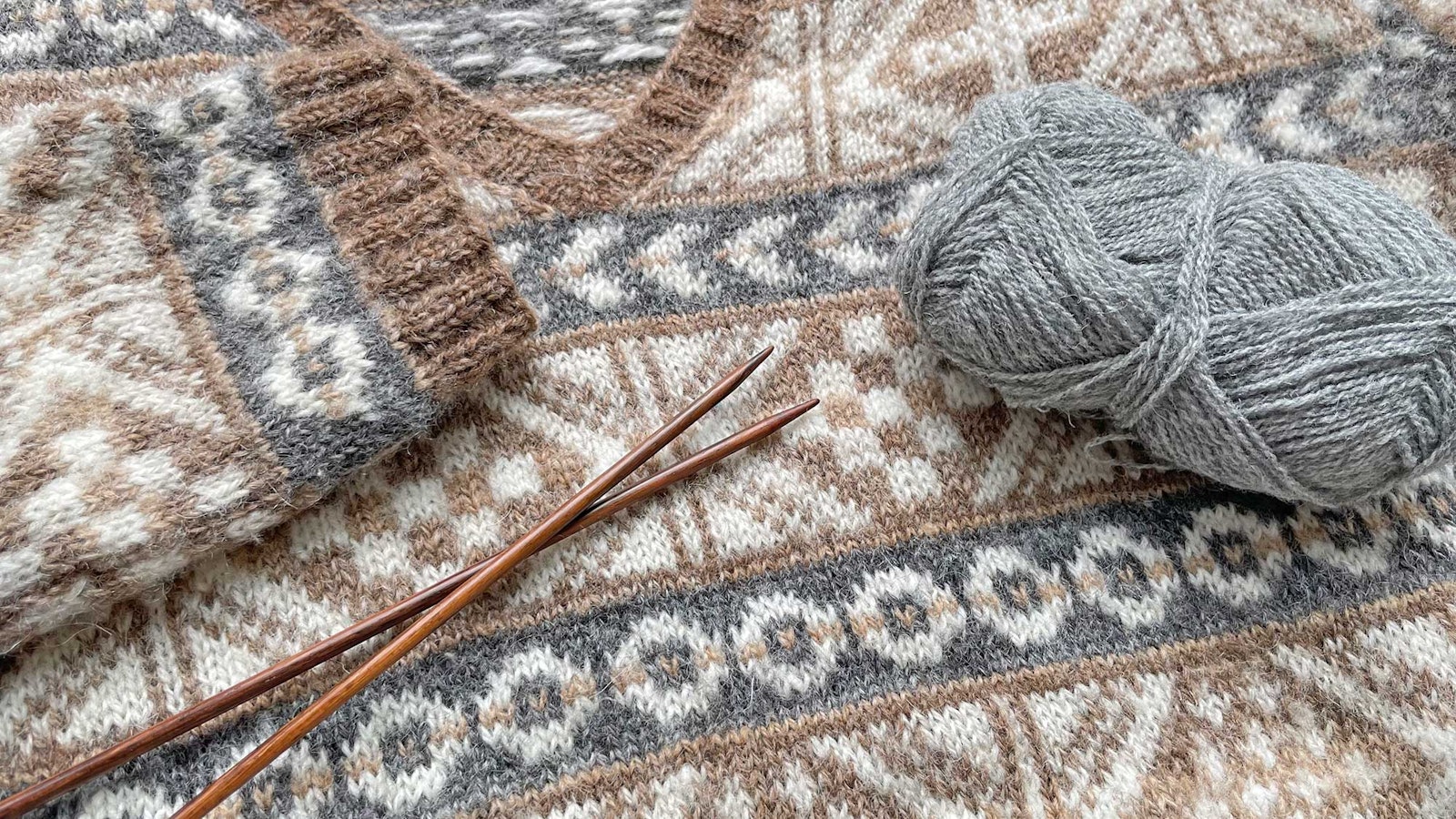The native sheep of the Shetland Isles are often described as a “primitive” breed, meaning that they retain many of the characteristics of their hardy ancestors. The first thing that often turns our knitter’s heads, of course, is their beautiful fleece colors.
Many Shetland sheep colors and color patterns are still identified by old names, tracing their roots to Old Norse. Some names, such as shaela (gray) and moorit (reddish brown), are still used by shepherds and yarn companies alike. However, there is evidence of a rich language of terms for patterns and colors in Norn—a dialect that predated the Shetland dialect spoken today—that has been lost.
 The Spindrift yarn line from Jamieson’s of Shetland carries natural shades as well as plied naturals that create a marled effect. Courtesy of Jamieson’s of Shetland/Simply Shetland
The Spindrift yarn line from Jamieson’s of Shetland carries natural shades as well as plied naturals that create a marled effect. Courtesy of Jamieson’s of Shetland/Simply Shetland
Curious about using undyed natural-color yarns or heathered neutrals inspired by natural color wool for colorwork? Trust me—it doesn’t have to be all beige!
Go All In: Sheep Shades
I love the challenge of an all-natural sheep-shade palette for color stranding projects. The Fair Isle jumper above only has five colors, but, from a distance, some of the colors can appear to shift depending on their neighbor colors.
Much of the strategy behind a successful stranded palette relies on value—the relative lightness or darkness of the colors. If you are new or new-ish to color stranding, choose background colors and pattern colors with a strong value difference. This is easy to check with a gray-scale filter on your camera.
 Check the contrast between your background and pattern colors by viewing your swatch in black and white. Photo by Kate Larson
Check the contrast between your background and pattern colors by viewing your swatch in black and white. Photo by Kate Larson
You can see here that the brown and gray yarns appear nearly the same when viewed in gray scale, so I separated them in the design. Even one row of light tan between the central motif (brown) and the border patterns (gray) helped in this case.
A Natural Buffer
Naturals can be just the thing you need to balance out a stranded colorwork project that uses dyed colors or heathers. Naturals can create breathing space and allow more saturated colors to stand out. I asked Shetland-born color aficionado Gudrun Johnston to weigh in on using natural colors in her color-stranding work. Gudrun is the brand manager for Simply Shetland, the US distributor for Jamieson's of Shetland. Her work frequently draws on the natural range of Jamieson's Spindrift colors.
 Gudrun in the Paul Klee sweater by Midori Hirose (left) and the half-hap version of her Hansel pattern available on Ravelry (right), both knitted in Jamieson’s Spindrift, distributed by Simply Shetland. Photos courtesy of Gudrun Johnston
Gudrun in the Paul Klee sweater by Midori Hirose (left) and the half-hap version of her Hansel pattern available on Ravelry (right), both knitted in Jamieson’s Spindrift, distributed by Simply Shetland. Photos courtesy of Gudrun Johnston
Gudrun says, “I find that when working on larger stranded knitting projects, where a lot of the main color will show, my inclination is often to start with selecting a natural shade. It works well as a palette cleanser and really provides the best kind of neutral base from which to then pick from an infinite selection of dyed colors.
“I also apply this to knitting Shetland haps (shawls), where instead of colorwork you have stripes of color in the border sections where old shale lace is worked. Those natural shades can really let the contrast colors pop beautifully in the fabric.”
Links
Jamieson’s of Shetland
Midori Hirose
Laurenson, Sarah, Ed. Shetland Textiles: 800 BC to the Present. Lerwick, Shetland:
Shetland Heritage Publications, 2013.
Simply Shetland
Gudrun Johnston is a Shetland-born, US-based knitwear designer who has joined the Simply Shetland team as brand director. Find her on Instagram @gudrunjohnston and @simply_shetland.
Kate Larson, editor of Spin Off, teaches handspinning around the country and spends as many hours as life allows in the barn with her beloved flock of Border Leicesters.

